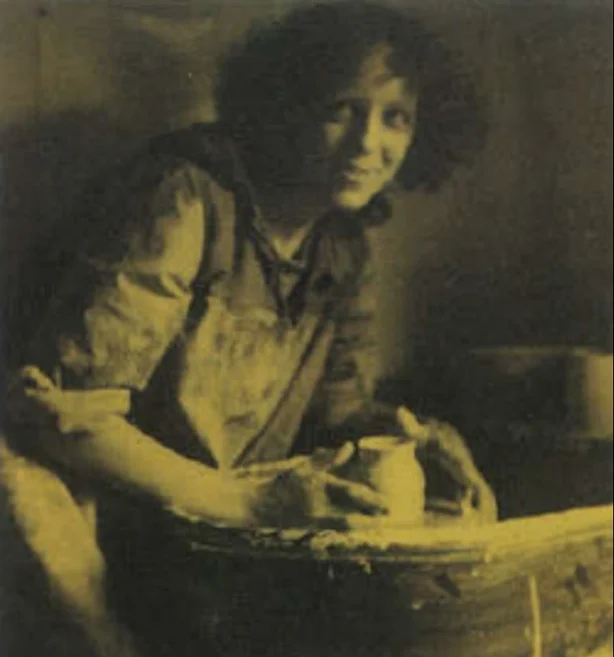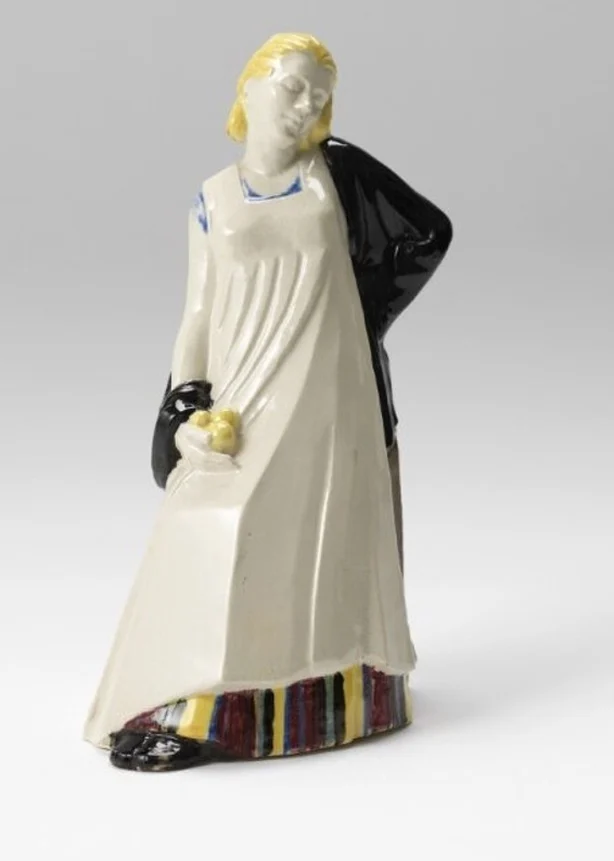Profile: Unheralded during her lifetime, Cox left behind a striking collection of works which continue to fascinate, influence and inspire
Kathleen Cox was a vibrant figure in the Dublin art scene. From the 1920s until she destroyed her ceramic moulds in the 1930s, Cox produced figurines, masks and busts that portrayed her personal friends and characters from the streets of Dublin. Now, over 50 years after her death, there is renewed enthusiasm for her work, an enthusiasm the artist never truly felt during her career.
Cox was born in Wo Sung and spent the first seven years of her life in China, where its culture and art made a deep and lasting impression on her. Her family moved to Listowel, Co. Kerry before settling in Howth, Co Dublin in 1911.
She later studied in the Dublin Metropolitan School of Art – now known as the National College of Art and Design (NCAD) – where many of Ireland’s most prominent artists, designers and educators have studied. In the early twentieth century, the majority of women studying or practicing art in Ireland came from relatively privileged backgrounds. Cox's father was a medical doctor, which provided a steady income for the family and allowed her to pursue her goal as an artist.

At the school, Cox excelled in her work with ceramics. She studied under master sculptor Oliver Sheppard, who is best known for creating the statue of Cú Chulainn in Dublin's GPO, and won the RDS art prize on three occasions in 1925, 1926 and 1927. The prize money allowed her to spend time in Paris, where she studied at the Académie des Beaux-Arts.
During her time there, Cox met a stranger who was threatening to commit suicide using his revolver. She intervened by throwing his gun into the River Seine. Although the artist saved the stranger’s life, he was furious that she got rid of his gun and insisted that she pay him the value of the gun, which she did in small installments. This outrageous episode demonstrates Cox's empathy, kindness and gentle nature, which also reflected in many of her artworks.
In 1929, Cox and her college friend Stella Rayner opened her pottery studio at 7 Schoolhouse Lane in Dublin city, from where they operated the first electric kiln in Ireland. In 1931, she staged an exhibition in their studio, where she displayed and sold her ceramics. Rayner held onto one of the pieces displayed in this exhibition and later donated it to the National Museum of Ireland in 1997. The figure, which she titled A Woman Carrying Something, depicts a woman concealing something beneath her grey shawl, which is hand painted with black trim.

Cox continued to exhibit her works at the RDS, Royal Hibernian Academy and at the Tailteann Games art exhibition in 1932. She also created movie posters and more functional ceramics such as cups, saucers and bowls.
Womanhood became a major theme in her work and her figures often represented women as mothers, as workers and as spiritual beings. She also created a series of works portraying people who worked around Dublin city, including pieces showing a woman working on the barge and 'The Lavender Man’ modelled on Michael Clifford, a Dublin street trader.
Her Fruit Seller figure depicts a woman dressed in a long apron and dress holding three pieces of fruit in her right hand. These pieces were also influenced by the types of figure groups made at the time by the Doulton Burslem factory in England, where she worked for a short period.

During the mid-1930s and with the Second World War looming, Cox became frustrated with aspects of her work, most particularly her inability as an artist to make an impact on the wider society. This led her to smash her moulds, sell the kiln and close down the studio. From then on, she avoided talking publicly about her work.
Although she stopped her professional career as a ceramic artist in the 1930s, she remained a creative person throughout her life turning her hand to dressmaking, knitting, crochet, bricklaying, electrical wiring and even thatching rooves. She later wrote and illustrated her own children’s book, which contained stories from each of the world’s main religions.
Meet @thekickart, Glass, Ceramics & Asian collections Curator at the National Museum of Ireland, as she explains her exciting discoveries from among the collections in the next episode of #IrelandsHiddenTreasures airing Sunday, April 28th, at 6:30pm on @rte pic.twitter.com/YJZrnvAOLm
— National Museum of Ireland (@NMIreland) April 25, 2024
In 1970, Cox published A Story of Stories under the pseudonym of C. M. Kay. The book was inspired by her careful research at the British Library and her belief in the education of traditions of all backgrounds so that it would contribute to a more peaceful world.
Cox died in London in 1972. "She was a passionate feminist," says Gráinne Palmer, one of her daughters, "although the term was not used much when she was alive." She was also described as "a somewhat figurative genius" whose work was "surprisingly sophisticated". Cox's work was only collected by the National Museum of Ireland in the 1940s, long after she finished making ceramics. Her reputation was mostly local, but this shining figure in Dublin left behind a striking collection of works, which continue to fascinate, influence and inspire.
Thanks to Gráinne Palmer and Peter Lamb for their help in compiling information and images for this article.
Follow RTÉ Brainstorm on WhatsApp and Instagram for more stories and updates
Disclaimer: The copyright of this article belongs to the original author. Reposting this article is solely for the purpose of information dissemination and does not constitute any investment advice. If there is any infringement, please contact us immediately. We will make corrections or deletions as necessary. Thank you.






